International Day of Women and Girls in Science
A seat at the table for women scientists
Research thrives on diversity of thought, new perspectives, talent and creativity. By involving and supporting female researchers, today's greatest challenges can be addressed and solved. To mark the International Day of Women and Girls in Science, four Empa researchers whose contributions have shaped science at the national and international level share their stories and motivations.
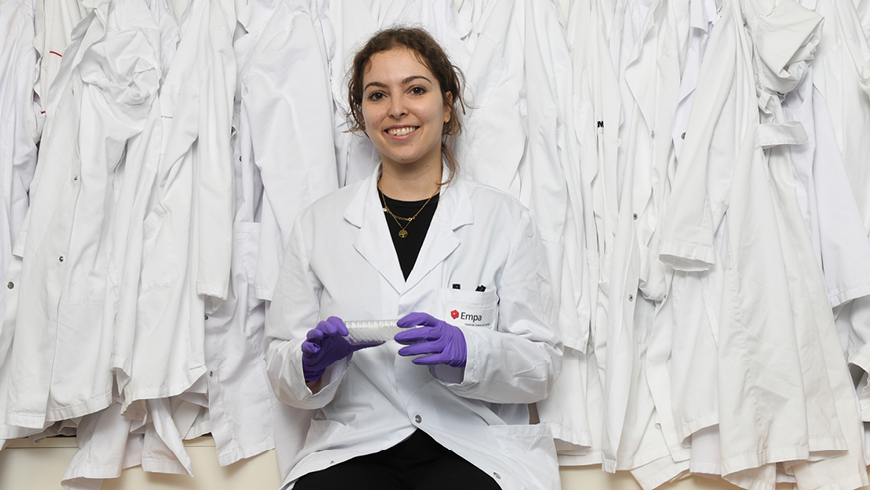
Just over a quarter of Empa's scientific staff are women, a stable proportion over the last six years – with room for improvement. "Diversity is crucial for outstanding research. We are committed to supporting our female colleagues and to motivating them to pursue a career in science, even – or especially – if they plan on starting a family. We are always looking to enable more women to take up leadership positions," states Empa director Tanja Zimmermann.
"Empa has taken numerous measures to increase the proportion of women. Programs such as FLP – Foster.Lead.Promote, the mentoring program feM-LEAD, Women meet Women lunches as well as the support of employees returning after parental leave through the Restart Support are part of this. It is a pleasure to witness so many motivated women at Empa; they are a great role model for future scientists," adds Melina Spycher, head of Diversity, Equity and Inclusion at Empa, Eawag and the Paul Scherrer Institute (PSI).
Martina Cihova, Joining Technologies and Corrosion Laboratory
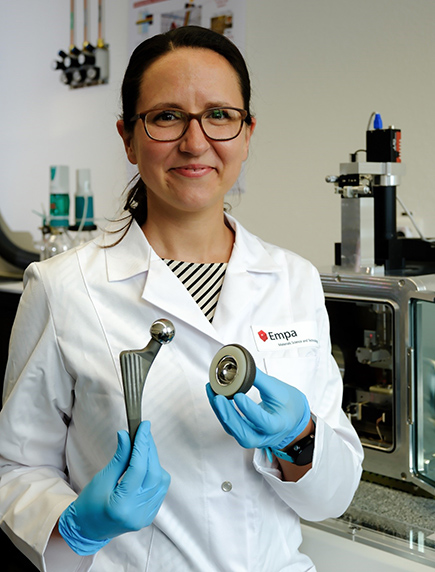
How did you get into science and what motivated you to take this path?
I got hooked on the science path early in my undergrads in bioengineering. I did not fully realize what I was signing up for when I applied for a fellowship, but a couple months later, I found myself spending the summer at a synchrotron facility in the U.S., working on surface engineering of thin-film coatings for implants. When I returned, I was pretty set that I wanted to become a biomaterials scientist and steered my studies in this direction. What has always excited me about science is its power to solve real-world problems by fundamentally understanding nature. Today, research is much more to me: It feels like the perfect blend of being an experimentalist, a writer, and a teacher. It is this combination that truly drives me.
Were there any particular challenges in your career that you encountered? How did you deal with them?
The Swiss research culture still expects 'mobility'. In my case this meant to move abroad for my postdoc – in the middle of the COVID pandemic and with my family including a baby. I remember telling my partner that this was an investment for having a slim chance for an academic position in Switzerland, but with no guarantee it would pay off. It was a great adventure, an incredibly enriching time both for my research and for us as a family. No doubt, no regrets. But the challenge of meeting the 'mobility checkmark' is real for many of us and comes at a cost that not everyone has the privilege to take on.
What role do you think women play in science and how has their position changed in recent years?
Science thrives on diversity in all its forms. Women, and other underrepresented groups, bring fresh perspectives and challenge established approaches. This shakes up research (and research culture) – something that may feel uncomfortable to some – but it really is a chance to grow. The key for it to thrive or fail, is to create an environment where these diverse views are welcomed and valued.
Listening to the experiences of women in science from previous generations, it is clear that a lot has changed, and I am very thankful that it has. Yet, looking at the persistent underrepresentation of women in leadership roles within research shows that we still have a long way to go. Meaningful change will only happen when women get a seat at the table where things are being decided.
What significance does the International Day for Women and Girls in Science have for you personally?
For me, it is both a celebration and a reminder. It’s a celebration of the incredible contributions women have made to science – often against significant odds – and a recognition of the progress we’ve made in creating a more inclusive research environment. But it’s also a reminder that we still have work to do. On a personal level, this day reminds me why it is so important to support and encourage other women in science. I’ve been fortunate to work along and learn from inspiring female scientists, and I want to pay that forward.
Gabriela Borin Barin, nanotech@surfaces Laboratory
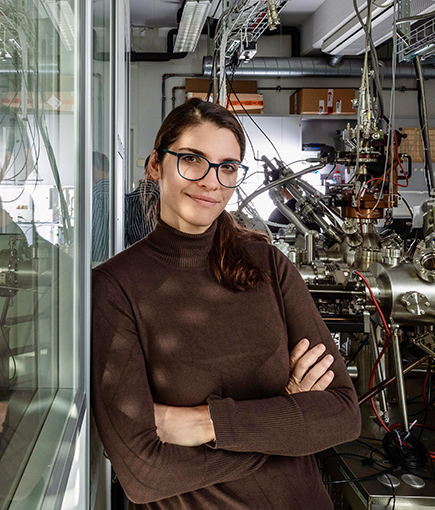
How did you get into science and what motivated you to take this path?
I think curiosity about how things work was always there; it was part of my environment growing up. Both of my parents were in STEM, and in our house, we were always encouraged to ask “why.” I remember coming home from school and my mother would want to know everything we had learned. Explaining it to her not only reinforced what we were taught but also made learning an active part of our lives.
Later, I had an incredible chemistry teacher in high school. He was a retired university professor who made the subject come alive. He didn’t just teach reactions; he showed us their real-world applications. That approach made me realize that chemistry wasn’t just theory but a powerful tool to solve real problems. That perspective ultimately led me to pursue a degree in science. The seed of curiosity and love for learning that my parents and teachers planted in me is what still drives me today.
Were there any particular challenges in your career that you encountered? How did you deal with them?
The biggest challenge I faced was the feeling that I didn’t belong or wasn’t good enough for a scientific career. Despite having strong female role models – starting with my mother, who is a physicist, and later my PhD advisors – as I advanced in my career, I saw fewer and fewer women in leadership positions in academia. That lack of representation made me question my place in science at times.
Overcoming this meant reminding myself why I love what I do and seeking out mentors and peers who challenged, supported and inspired me. I’ve learned that belonging isn’t about fitting into an existing mold – it’s about contributing to the field in my own way and helping create a more inclusive and welcoming environment for future generations.
What role do you think women play in science and how has their position changed in recent years?
Women play a crucial role in science because diversity makes science better. A more diverse scientific community means bringing different perspectives and backgrounds into problem-solving, leading to more innovative solutions. There is no doubt that progress has been made. More women are entering scientific and technical fields, and representation is increasing. But we still have a long way to go. Women remain largely underrepresented in professorships and boards, are cited less often, and face more barriers to promotion. Bias, whether explicit or unconscious, continues to shape career trajectories.
History has shown us that progress doesn’t happen passively; it requires action. Those in the majority rarely have an incentive to change the status quo unless it is actively challenged. If we want lasting change, we need to keep the conversation going, challenge biases and actively work toward a more inclusive scientific community.
What significance does the International Day for Women and Girls in Science have for you personally?
For me, the International Day for Women and Girls in Science is both a celebration and a reminder. It’s a moment to recognize the contributions of women in science and the progress we’ve made and to inspire the next generation of female scientists. But it’s also a reminder of how much work is still needed.
Personally, it reminds me why representation matters. I was lucky to have strong female role models early on, but I’ve also seen how rare that becomes as you move forward in your career. If we want a future where women and men truly have equal opportunities in scientific and technical fields, we need to do more than encourage women to pursue these careers; we need to dismantle the barriers that make them question whether they belong in the first place. Because, unlike their male peers, they are still being asked to justify their presence.
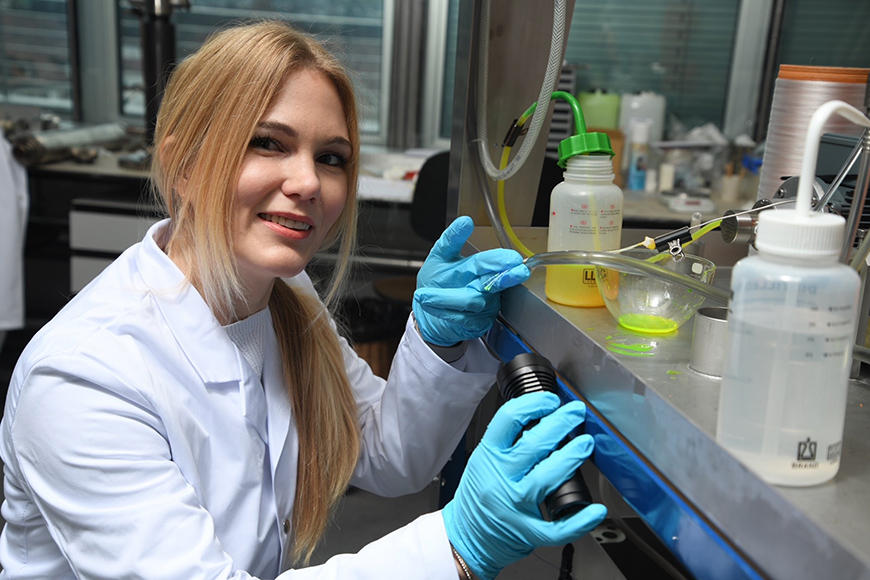
Edith Perret, Advanced Fibers Laboratory
How did you get into science and what motivated you to take this path?
I have always been drawn to science due to my curiosity and desire to understand how things work. Science serves as a powerful tool for solving real-world problems, bridging the gap between fundamental knowledge and groundbreaking technological advancements. The thrill of the scientific process – observing, experimenting, discovering, analyzing, and innovating – drove me to choose this path.
Were there any particular challenges in your career that you encountered? How did you deal with them?
A particular challenge that I faced was maintaining a healthy work-life balance. Like many working women, I have experienced difficult phases in my life – whether it was losing loved ones, raising young children, or navigating personal challenges alongside my career.
How I dealt with these difficult phases is not easy to answer. I realized that support from family and friends can make a significant difference. Properly planning the week also helps in managing responsibilities effectively. Equally important is making time for personal activities that recharge you, whether it’s sports, socializing or simply relaxing. Learning to say no is crucial as well, as women often take on too much, leaving little energy for themselves.
What role do you think women play in science and how has their position changed in recent years?
Marie Curie is a prime example of the vital role women play in science and how their position has evolved over time. Despite facing immense challenges as a woman in a male-dominated field, she made groundbreaking contributions to both physics and chemistry. Curie was the first woman to win a Nobel Prize but was often denied recognition, funding, and academic positions simply because of her gender. Even after her first Nobel Prize, many institutions hesitated to support her work.
Today, women in science have greater recognition, funding opportunities and also occupy leadership positions. However, one of the main challenges that needs to be overcome is the outdated societal belief that women should prioritize childcare over pursuing a career in science. From my own experience, I can confidently say that it is possible to balance both.
Mirjana Dimitrievska, Transport at Nanoscale Interfaces Laboratory
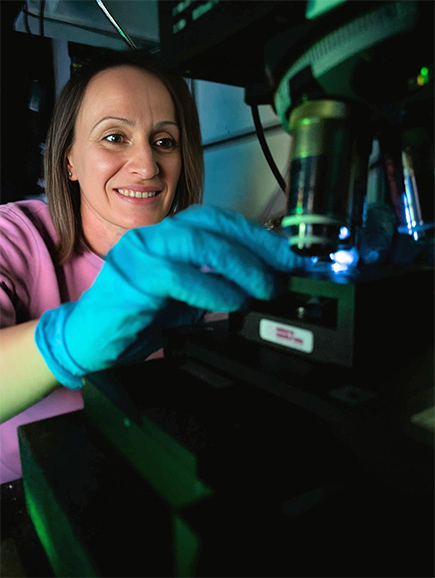
How did you get into science and what motivated you to take this path?
Even though I come from a family of scientists, with both my mom and sister being physicists and my dad an engineer, I wanted to become a lawyer (and my family agreed that suited me very well!). However, when I was 11, there was a war in my home country, and we spent a lot of time without electricity and heating. During this time, my dad would get creative with his engineering skills to make us more comfortable. Watching him transform "useless" things into something meaningful awoke my desire to contribute, too. I wanted to make things that would easily produce electricity, and I also wanted to make them available for everyone, so that no one had to experience the hardships we went through. This is when my desire to do science was truly born, and it is going strong until this day.
Were there any particular challenges in your career that you encountered? How did you deal with them?
Balancing a career and a family has been the biggest challenge for me. Considering that my husband is also a scientist (and until recently he was also in academia), and adding two kids to the equation, we became a 4-body problem – something that not even the laws of physics can solve! We needed to balance between desires and opportunities and, most importantly, we had to compromise. For example, my husband followed me to US for my postdoc, and I followed him to Switzerland when he got a position here. Now, we no longer have issues around moving, but spending quality time as a family is still a challenge. I needed to learn how to become more effective within a smaller timeframe, and this included learning how to say "No" to people and especially to projects – and not feel guilty about it. I still struggle, but I am improving.
What role do you think women play in science and how has their position changed in recent years?
Marie Curie, Emmy Noether, Chien-Shiung Wu, Katherine Johnson and many more illustrate the best, in my opinion, how women have always played a crucial role in science: by making groundbreaking discoveries despite historical barriers. It is good to see that these barriers have been lowered since then. However, there is still much to be done to enable better opportunities for female scientists. It is very encouraging to see that women are taking on more leadership roles in academia today, for example in Switzerland at Empa, EPFL and the University of Fribourg. Besides ensuring diversity, it also serves as an inspiration to a younger generation of girls – namely that they could easily embody similar roles in the future. I hope the day will soon come when we won't need to celebrate women in science as an "endangered species", but rather as equal partners.
What positive effects do you see in the promotion of girls and young women in scientific and technical fields?
Promoting girls and young women in science is essential to breaking down gender stereotypes and inspiring more young women to pursue careers in science. As the saying goes, "Strike while the iron is hot" – introducing young minds to science early, along with strong role models, helps build confidence and a belief that anyone can succeed in the field. Increasing the presence of women in scientific roles enhances diversity, which fuels innovation by bringing a wider range of perspectives to solving global challenges. A more inclusive and equitable scientific community leads to more creative solutions and a stronger society overall.
Dr. Martina Cihova
Joining Technologies and Corrosion
Phone +41 58 765 43 88
Dr. Gabriela Borin Barin
nanotech@surfaces
Phone +41 58 765 61 23
Dr. Edith Perret
Advanced Fibers
Phone +41 58 765 75 12
Dr. Mirjana Dimitrievska
Transport at Nanoscale Interfaces
Phone +41 58 765 45 32
-
Share






